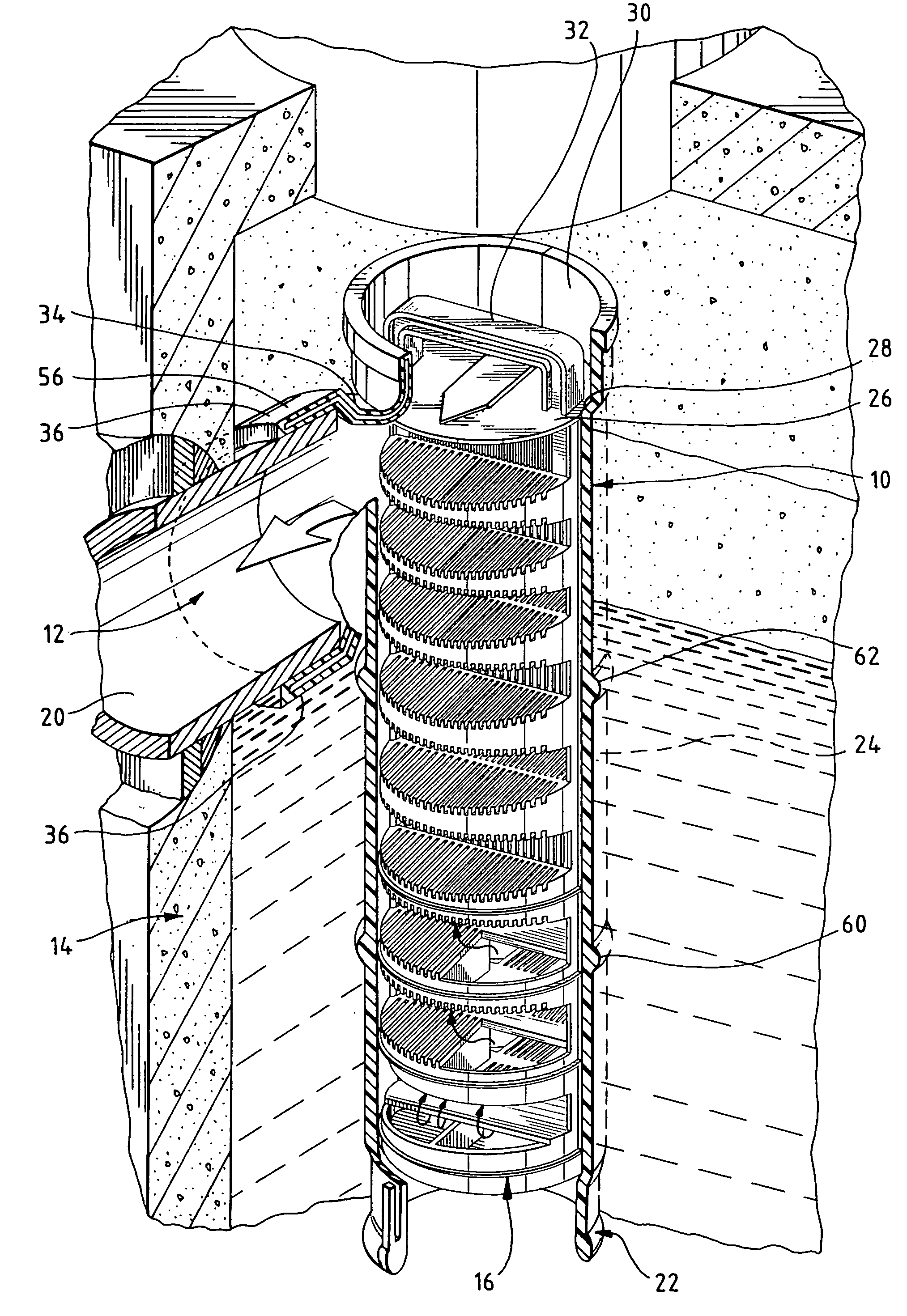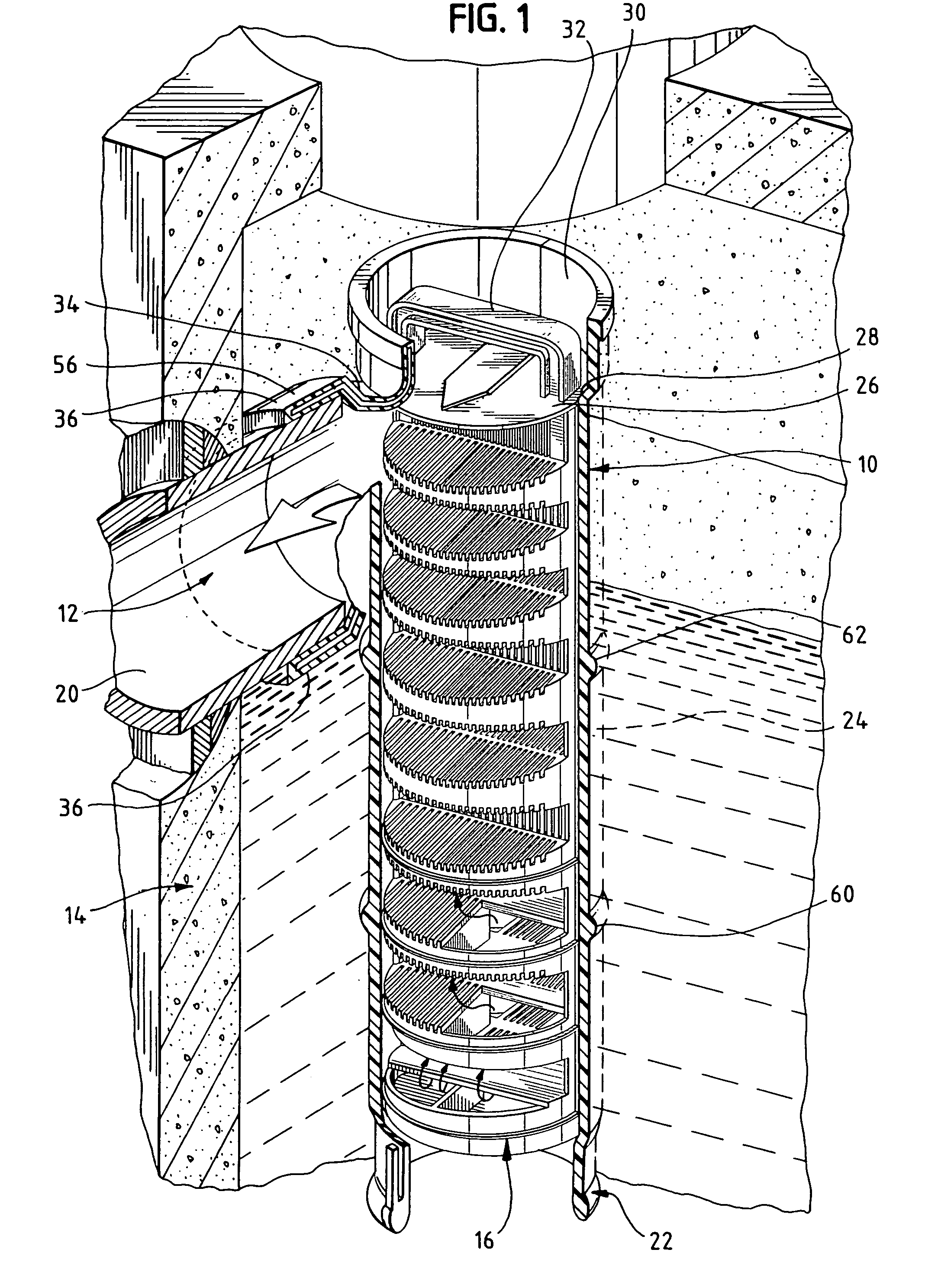Tee baffle for use at inlet or outlet of septic and other on-site waste disposal systems
a technology for septic tanks and waste disposal systems, applied in the direction of filtration separation, branching pipes, separation processes, etc., can solve the problems of septic tanks, exposed portions of concrete baffles, and deterioration, and achieve material and molding expense savings, sufficient solvent room, and reduced wall thickness
- Summary
- Abstract
- Description
- Claims
- Application Information
AI Technical Summary
Benefits of technology
Problems solved by technology
Method used
Image
Examples
Embodiment Construction
[0035]A sanitary tee 10 of the present invention is used at an outlet opening 12 of a septic tank 14, and can serve as a housing for an effluent filter 16, as shown in FIG. 1 as a multi-pass type effluent filter. Before exiting the septic tank 14 through a drainage pipe 20, effluent passes into a lowermost end 22 of the sanitary tee 10. The effluent then is filtered through the effluent filter 16 substantially occupying the hollow space in an elongated main body portion 24 of the sanitary tee 10. The cap 26 of the effluent filter 16 rests on a tapered rim 28, or inner slanted shoulder, at the intersection of the elongated main body portion 24 and a bell-shaped upper end or hub 30 of the sanitary tee 10.
[0036]The hub 30 is preferably in the form of a ring that is open at the top to allow for access to the handle 32 of the effluent filter 16, provided on a top side of the cap 28. The sanitary tee 10 further includes an arching sweep portion 34 that defines an opening in communication ...
PUM
| Property | Measurement | Unit |
|---|---|---|
| inner diameter | aaaaa | aaaaa |
| diameter | aaaaa | aaaaa |
| outer diameter | aaaaa | aaaaa |
Abstract
Description
Claims
Application Information
 Login to View More
Login to View More - R&D
- Intellectual Property
- Life Sciences
- Materials
- Tech Scout
- Unparalleled Data Quality
- Higher Quality Content
- 60% Fewer Hallucinations
Browse by: Latest US Patents, China's latest patents, Technical Efficacy Thesaurus, Application Domain, Technology Topic, Popular Technical Reports.
© 2025 PatSnap. All rights reserved.Legal|Privacy policy|Modern Slavery Act Transparency Statement|Sitemap|About US| Contact US: help@patsnap.com



